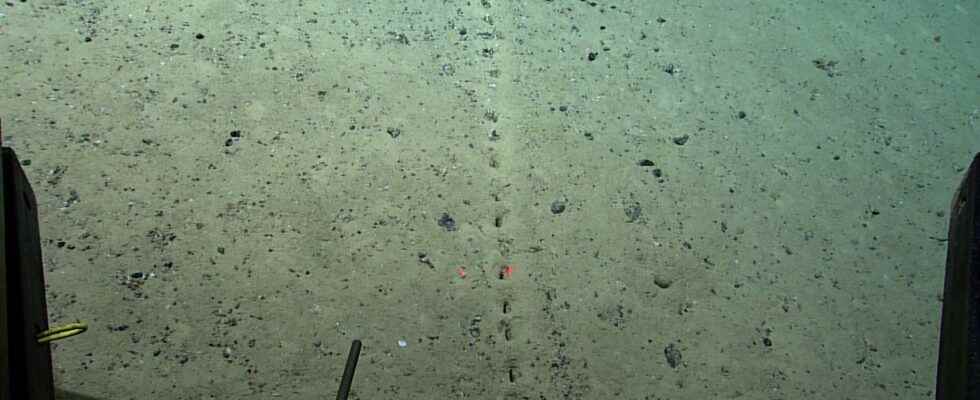While exploring around the Mid-Atlantic Ridge, where the depth of the ocean exceeds one kilometer, researchers came across an amazing phenomenon: a series of holes dug at regular intervals in the sandy bottom at more 2,000 meters deep. And no explanation exists to date to justify their presence.
You will also be interested
[EN VIDÉO] The deep seabed, these ignored dumps The deep ocean floor is much more polluted than we think, as evidenced by these images taken in the Pacific several hundred meters deep.
Close to mid-atlantic ridge is the Charlie Gibbs fracture zone, where the depth varies between 700 meters and more than 4,500 meters. A team from the NOAA (National Oceanic and Atmospheric Administration) ventured there and made an astonishing discovery there on July 23: a series of holes dug in the sand 2,540 meters deep, almost perfectly aligned and placed in a regular pattern! They were at the crest of a submari volcanon off the Azores.
“ We observed several of these sublinear sets of holes in the sediments. They have already been reported in the region, but their origin remains a mystery.explains the NOAA press release. Although they look almost man-made, the little piles of sediment around the holes make them look like they were dug by… something. »
Their presence is still not explained to this day
Around the holes, the researchers observed through the remote-controlled vehicle small piles of sediment dug all around the holes, suggesting that they had indeed been dug. However, it is impossible to know if they are connected under the ground. Having no clues about their origin, the scientists proposed to Internet users to make assumptions as to their origin. And they were not disappointed! Stars of sea that make the wheel, new species of crabs, rises of the seabed or even alien…, theories are going well on the social networks.
The most probable according to the NOAA is that these holes correspond to “an excavation by a sediment-dwelling organism or digging and removal, possibly via a feeding appendage”, but for them, this discovery is above all a reminder that we know very little about the seabed and the life therein.
Just landed on the seafloor and guess what we found?
More HOLES!!
Live video: https://t.co/PhIY0PEDEdpic.twitter.com/J6FyrBVngs
—NOAA Ocean Exploration (@oceanexplorer) July 28, 2022
Interested in what you just read?
